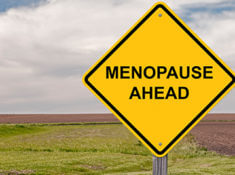PCOS test is based on the Rotterdam criteria for diagnosing PCOS.

Awareness
Polycystic ovary syndrome (PCOS) is a condition that leads to cysts in a woman’s ovaries. It happens when the female sex hormones estrogen and progesterone are out of balance.
Menopause is when a woman’s periods stop completely, after a gradual reduction in sex hormone levels. This reduction in hormones starts years before actual menopause. This period is called perimenopause.
As both Polycystic ovary syndrome and menopause relate to changes in sex hormones, people wonder how they are connected.
Like we said, menopause or perimenopause is caused by a gradual fall in a woman’s hormone levels. And PCOS is caused by a hormonal imbalance. What is common between the two is the hormone: progesterone.
Women with Polycystic ovary syndrome produce a higher level of the male sex hormone testosterone than most women do. They also have a lower level of the female sex hormone progesterone.
Menopause is caused by a gradual reduction in the female sex hormones progesterone and estrogen. Over time, once the female sex hormone levels are low enough, a woman stops ovulating. This causes her to stop menstruating.
Some symptoms are unique to both these conditions. Knowing these differences can help separate the conditions.
Symptoms unique to Polycystic ovary syndrome that do not occur in perimenopause include:
Symptoms that are unique to perimenopause and do not occur in PCOS include:
When women with PCOS go through perimenopause, they will experience symptoms of both conditions at the same time.
Some symptoms of perimenopause are similar to symptoms of PCOS. If a woman starts experiencing symptoms of PCOS in her 40s or 50s, when she may also be experiencing perimenopause, it can be hard to tell the two apart. If you have Polycystic ovary syndrome, you may reach menopause later than women without this condition.
There’s a myth that menopause cures PCOS. However, the reduction in hormones that happens in the lead up to menopause does not redress the imbalance of hormones that causes Polycystic ovary syndrome. As such, menopause does not cure this hormonal disorder. The only way to deal with PCOS is through a holistic treatment plan that involves a healthy diet, regular exercise and changes to lifestyle.